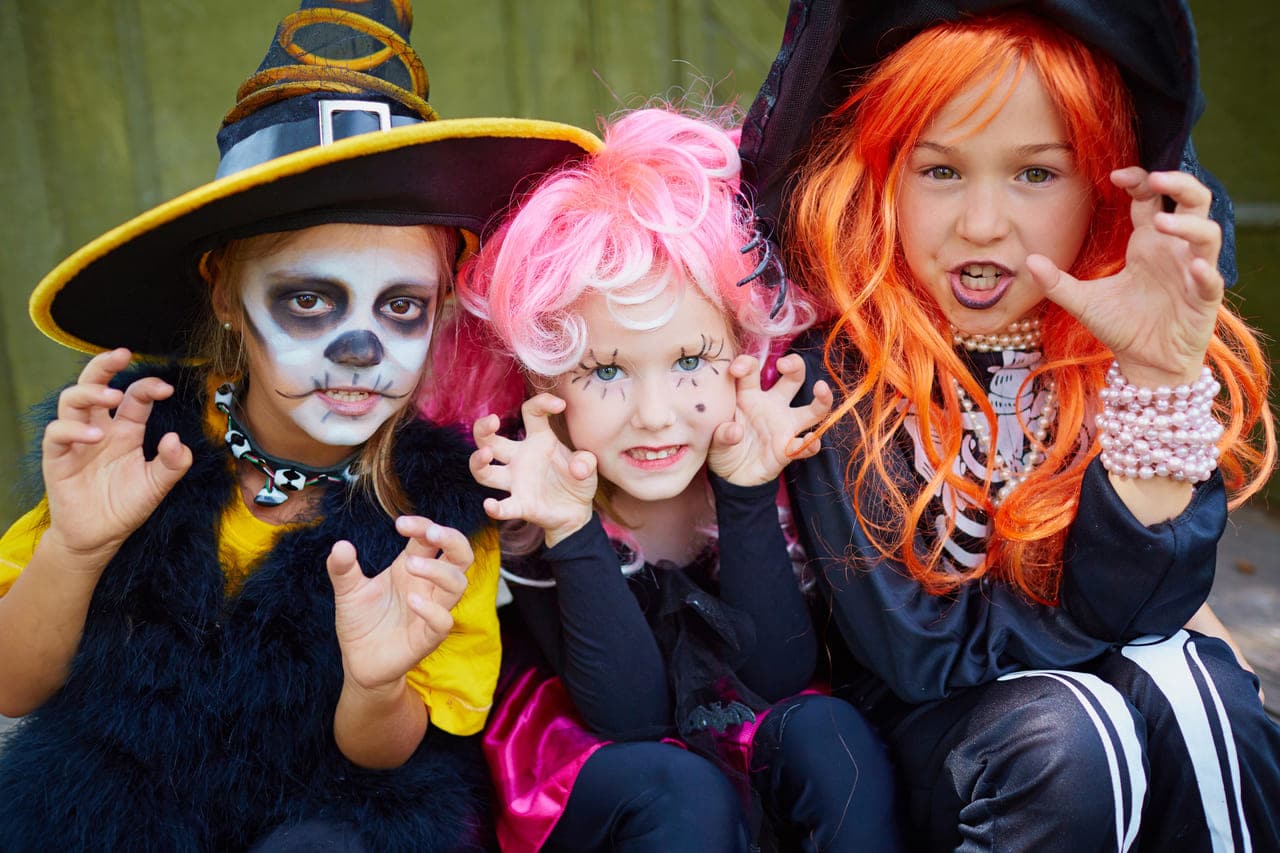
Spanish Halloween Words and Vocabulary
DATE:
Thanks to globalization, traditions that were celebrated in one part of the world before are now known everywhere. Even those covering a small geographical area can find their stories on the internet.
If you’re living in a country where Halloween is vastly celebrated, you would believe the festivity is practiced anywhere else in the world. You wouldn’t be that wrong given that this is an old one. Sure, the traditional festivity has changed over the years but there is still some vestige of the Celtic stories there to be found.
Halloween in Ireland (where the holiday originated), the United States (where the marketing industry has spread the celebration massively worldwide), and Canada where it is also carried out similarly, including costume parties, trick-or-treating deals, pranks, and games.
Halloween in Spanish-speaking countries
There are similarities and differences when it’s celebrated in Spanish and English-speaking countries. Nevertheless, it’s important to point out that this celebration has grown in popularity in Latin America over the years due to the influence of the United States.
In countries like Mexico, Chile, Colombia, Peru, Bolivia, and Spain the celebration is somehow similar to the one in North America. Decorations on houses, schools, or even the workplace are always carried out.
People would go out in disguises to ask for free candies or gather at nightclubs. However, In most countries, this celebration is for children to enjoy the evening.
Although the festivity can be celebrated in some Spanish-speaking countries, it isn’t yet an integral part of Latin American culture.
Halloween in Mexico
Directed to children who would dress themselves as a witch, a ghost, a scarecrow, a mummy, a zombie, a vampire, or as any scary monster on this day to ask for candy at their neighbor’s.
When kids get to a door, they shout the Spanish words “Queremos Halloween” (We want Halloween) instead of the famous “trick or treat”.
As the celebration is close in date to Día de los Muertos, people outside Mexico would often confuse these two but if you live there, you’ll notice how it overshadows Halloween.
Día de los Muertos in Mexico
You must not confuse this ancestral Mexican tradition with a Spanish Halloween because it is nothing of the sort even though the idea revolves around the dead.
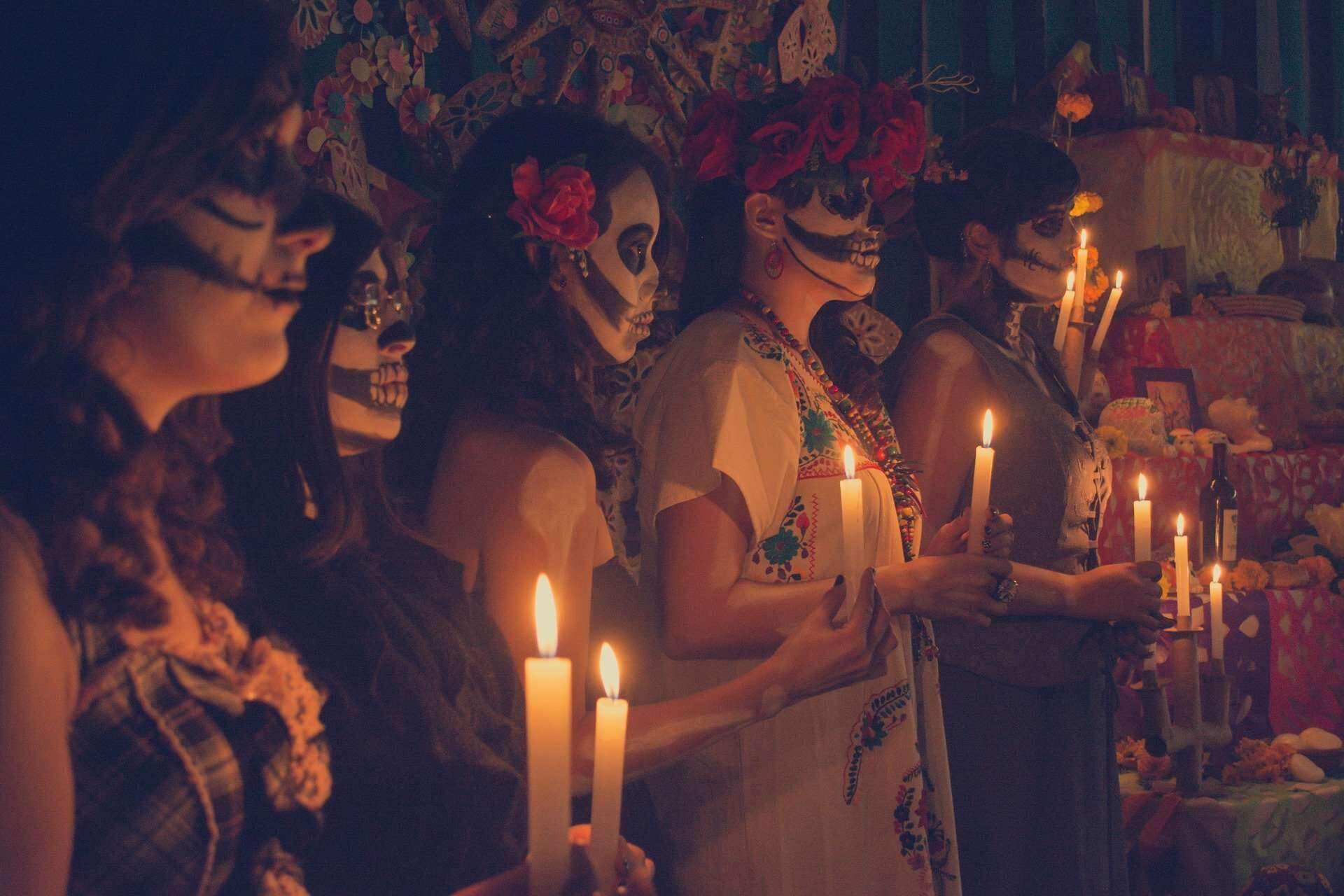
On Halloween, people fear death but not on the Day of the Dead, all the contrary; on this day, November 2nd., the memory of the people who have died are honored.
They are invited back to the land of the living so they can visit their relatives and loved ones who offer them an ofrenda.
At home, families will build altars with pictures of their dead relatives. Even when the decoration may vary from house to house, these altars are usually accompanied by candles, painted skulls, food, and candies as offerings, flowers, mirrors, and more.
Cempasúchil or “flower of the dead” are marigolds whose scent is believed to lure the spirits home.
If you haven’t seen it or haven’t been to Mexico yet, check out the movie “Coco” where you’ll see how this tradition is celebrated.
Want to know more about the wonders Mexico has to offer? Check out our Mexico Travel Guide.
Halloween in Chile
Decoration, witches, costume parties, and trick-or-treating are common things in Chile on “el Día de Halloween”. It’s a special occasion for children to hang out in costumes with their friends and ask for treats.
Squares in Chile are filled with children asking for sweets from people passing by and adults munching on the treats.
Halloween in Colombia
Pretty similar to what you can see in the movies. However, Halloween in Bogota is more of a family thing.
The whole family wears attires and goes on the streets and malls to ask for candy and enjoy the evening. People in Colombia don’t go from house to house asking for treats, mostly because religious beliefs condemn this celebration and people wouldn’t want to disturb or be disrespectful.
There is no tricking on the stores as the festivity is about sharing with your family but If you’re more fond of partying, you also have options. Bars and nightclubs are filled with people participating in contests for the best Halloween disguise.
Colombian Spanish is one of the most attractive and colorful dialects in the Hispanic world. Check our guide on Colombian Slang and learn how to speak like a true parcero.
In Cali, there is an annual “moto Halloween party” where motorcyclists wear costumes and go around the city.
On the other hand, apart from Halloween, children ask for food from their neighbors on November 1st. to make a sancocho. As they go from house to house, they sing “Angels we are, from heaven we come, begging for ourselves. Aguardiente and rum for Marcelo. Brandy and wine for Marcellin.”
Halloween in Peru
The festivity is mostly celebrated by little children in schools. Costumes are an important part of the celebrations as well as decorating with pumpkins and spider webs.
A small detail to take into account is that the traditional colors for Halloween are not orange and black in Peru but purple and people would wear this color throughout October.
Planning a trip to the Land of the Incas? Learn the Peruvian slang and expressions that every traveler should know!
Just as in Mexico, children don’t use the term “truco o trato”. Instead, children chant “Halloween, Halloween, Halloween” when in front of their neighbors’ doors.
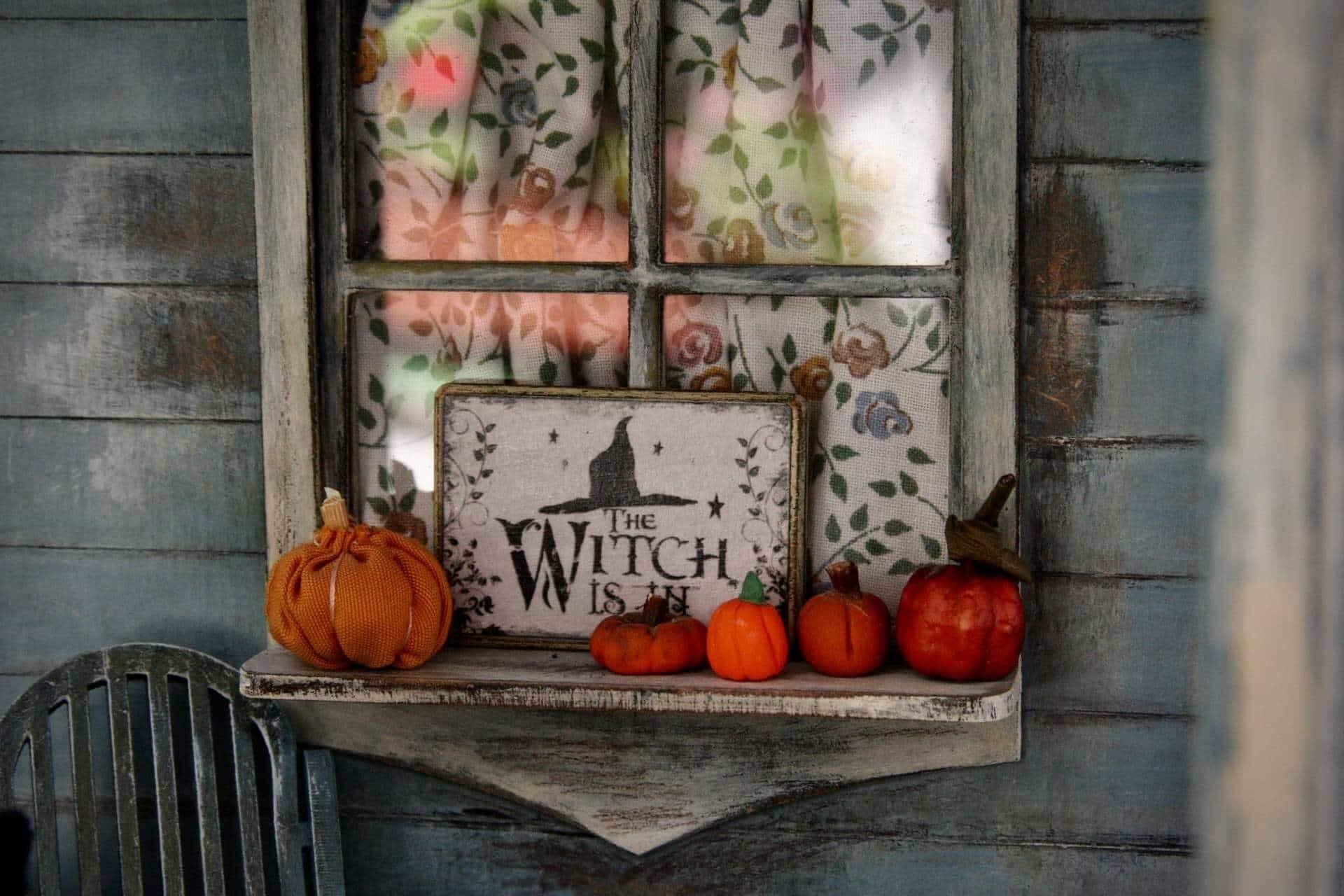
Halloween in Bolivia
Most people in Bolivia don’t even know the meaning of Halloween. The celebration in this country is purely commercialism.
However, and just as you’ll be able to see in the Andes region, the locals mix the holiday with their traditional rituals.
While children will wear costumes and ask for candy on the streets just as Halloween demands, adults will be busy with the preparation of “All Saint’s Day” on November 1st and “Day of the Dead” on November 2nd.
It’s very common to see travelers from the United States in outfits related to their festivity but not the locals who stick to their traditional witches and monsters.
Bars will also hold contests around the best attires, special drinks for the party-goers, and a great variety of decorations that will set the ambiance.
Halloween in Spain
Spanish people have adjusted to the festivity to make something on their own throughout the country.
As in other countries in Latin America, Spanish people have a three-day celebration: “Spanish Halloween” or Día de Brujas on October 31st, “All Saints’ Day” or Día de todos los Santos on November 1st, and “Day of the Dead” or Día de los Muertos on November 2nd.
In Galicia, for instance, where Celtic traditions are still strong-rooted, Spanish Halloween is more about the original festivity with pumpkin carving, custom parties, bonfires, rituals, and, sometimes, trick-or-treating.
Spanish Halloween is also seen as it is in most countries in Latin America depending on the place: it could be a holiday for children or to commemorate the dead.
Hence, if you’re visiting big cities in Spain, you’ll find clubs, hotels, and restaurants organizing big events and colorful costume parties.
In a closely related tradition, there is Fira de les Bruixes (Feria de Brujas) in the small village of Sant Feliu Sasserra, in Catalonia. It’s a witch festival of two days carried out every year in honor of twenty-three women who were sentenced to death during the inquisition as they were accused of witchcraft.
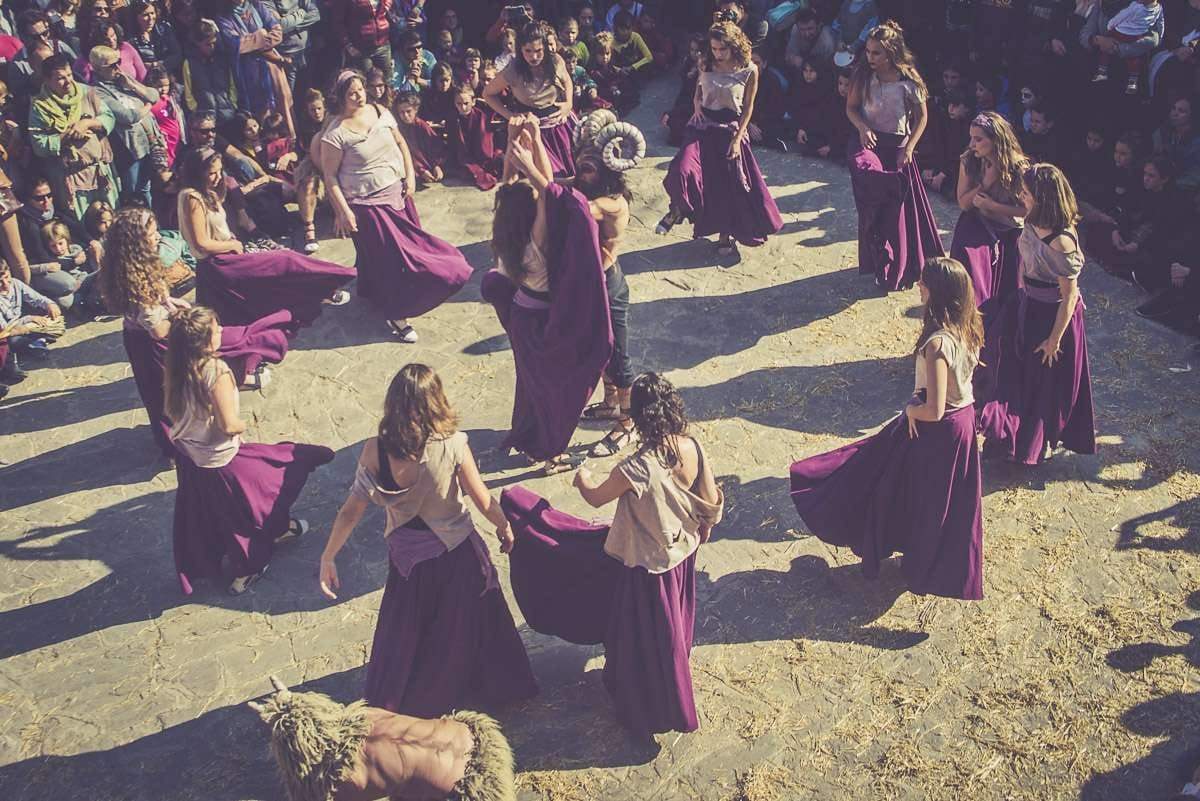
Which countries do not celebrate Halloween?
As it was said before, the celebration is not as important as it is in North America and some religious leaders have also found a way to make this festivity something related to demons and the devil.
In Venezuela, the festivity is limited mostly to nightclubs where costume parties are thrown for young people. Elders go to church to pray for the souls of those deceased.
They don’t generally practice the tradition in the Dominican Republic either aside from parties that are limited to adults.
Useful Spanish Halloween words you should know
Here is some popular Spanish vocabulary that will come in handy for this time of the year:
Spanish Halloween Vocabulary: Nouns
|
Spanish |
English |
Spanish |
English |
|---|---|---|---|
|
El disfraz |
Costume |
La máscara |
Mask |
|
La araña |
Spider |
El maquillaje |
Makeup |
|
La bruja |
Witch |
La lámpara de calabaza |
Jack-o-lantern |
|
La calabaza |
Pumpkin |
El hombre lobo |
Werewolf |
|
El Caramelo / El Dulce |
Candy |
El horror |
Horror |
|
La calavera |
Skull |
El hechicero |
Wizard |
|
El esqueleto |
Skeleton |
La noche |
Night |
|
Un fantasma |
Ghost |
La lápida |
Tombstone |
|
El gato negro |
Black cat |
El espantapájaros |
Scarecrow |
|
La tumba |
Grave |
El cementerio |
Cemetery |
|
El monstruo |
Monster |
El / La zombi |
Zombie |
|
El murciélago |
Bat |
La telaraña |
Spider web |
|
El vampiro |
Vampire |
La casa embrujada |
Haunted house |
|
La momia |
Mummy |
La noche de brujas |
Halloween |
|
La escoba |
Broom |
|
Spanish Halloween Vocabulary: Adjectives
|
Spanish |
Translation |
|---|---|
|
Aterrador |
Scary |
|
Oscuro / Oscura |
Dark |
|
Gigante |
Giant |
|
Misterioso / Misteriosa |
Mysterious |
|
Embrujado / Embrujada |
Haunted |
|
Travieso / Traviesa |
Mischievous |
|
Espeluznante |
Creepy / Spooky |
|
Viscoso / Viscosa |
Slimy |
|
Sangriento |
Bloody |
|
Escalofriante |
Spooky |
|
Siniestro |
Sinister |
Spanish Halloween Vocabulary: Verbs and phrases
|
Spanish |
Translation |
|---|---|
|
Hacer un truco / Gastar una broma (a alguien) |
To play a trick |
|
Asustar / Dar miedo |
To scare |
|
Sorprender |
To surprise |
|
Festejar |
To party |
|
Celebrar |
To celebrate |
|
Bailar |
To dance |
|
Tener miedo (de) |
To be afraid of |
|
Tallar una calabaza |
To carve a pumpkin |
|
Disfrazarse como |
To dress up as |
|
Tocar la puerta |
To knock on the door |
|
Rondar |
To haunt |
|
Tocar el timbre |
To ring the doorbell |
|
Gritar |
To scream |
|
Dulce o truco / Truco o trato |
Trick or treat |
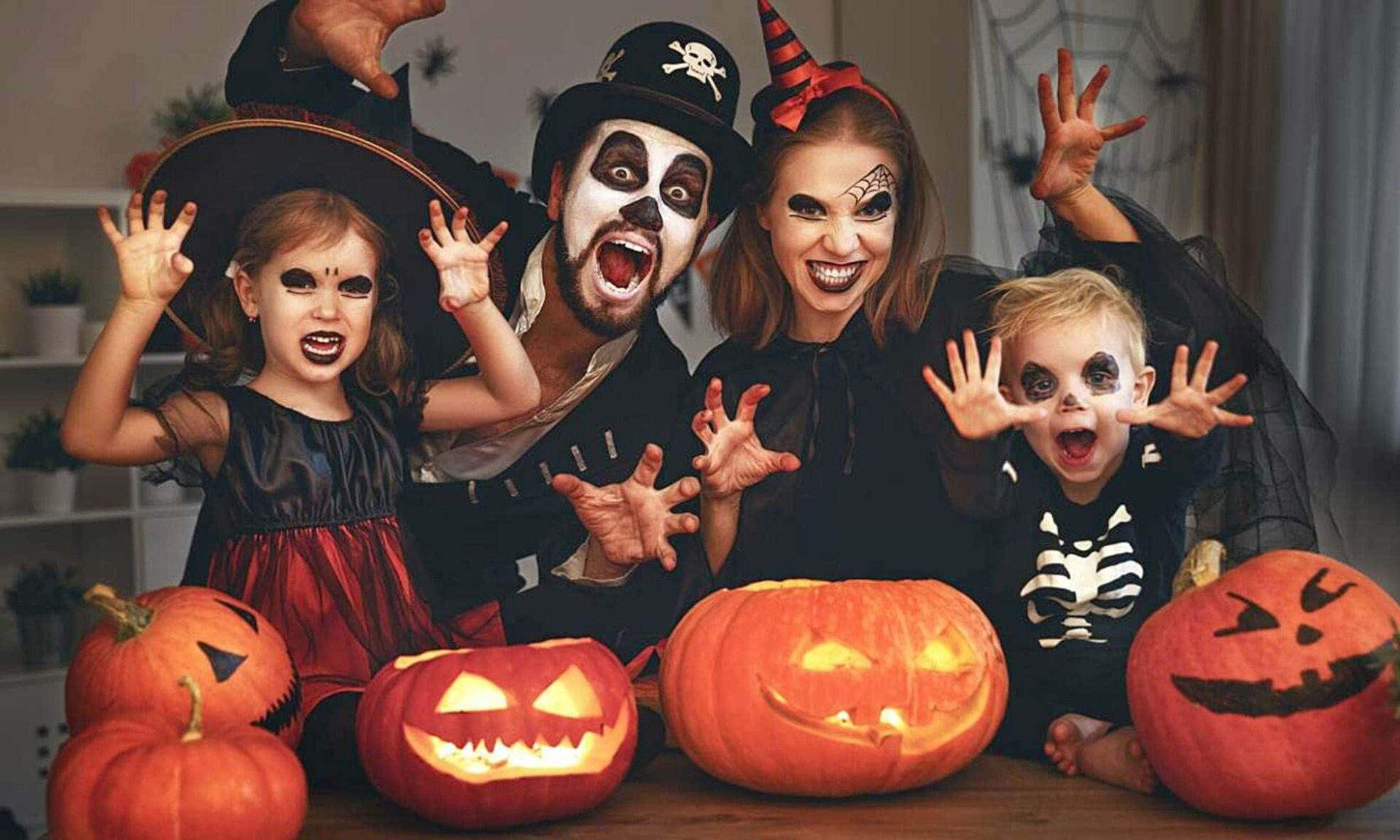
As a Spanish Halloween Vocabulary note, when people say “Dulce o truco”, a truco is a trick and dulce refers to the candy that needs to be delivered. Another way to say trick or treat in Spanish is “dulce o travesura.”
The Rest is Up to You!
You’re now armed with the knowledge and language comprehension you need to traverse Spanish-speaking countries and mingle with the locals!
Have fun discussing Halloween like a pro! Remember, if you’re looking for the support of an incredible teacher, we can help. Try a free 1:1 class or sign up for a free 7-day trial of our group classes to see how thousands of students are dominating the Spanish language with SpanishVIP.
We’ll see you next time.











